News
26 May 2022
Frequency Coordination and Frequency Management
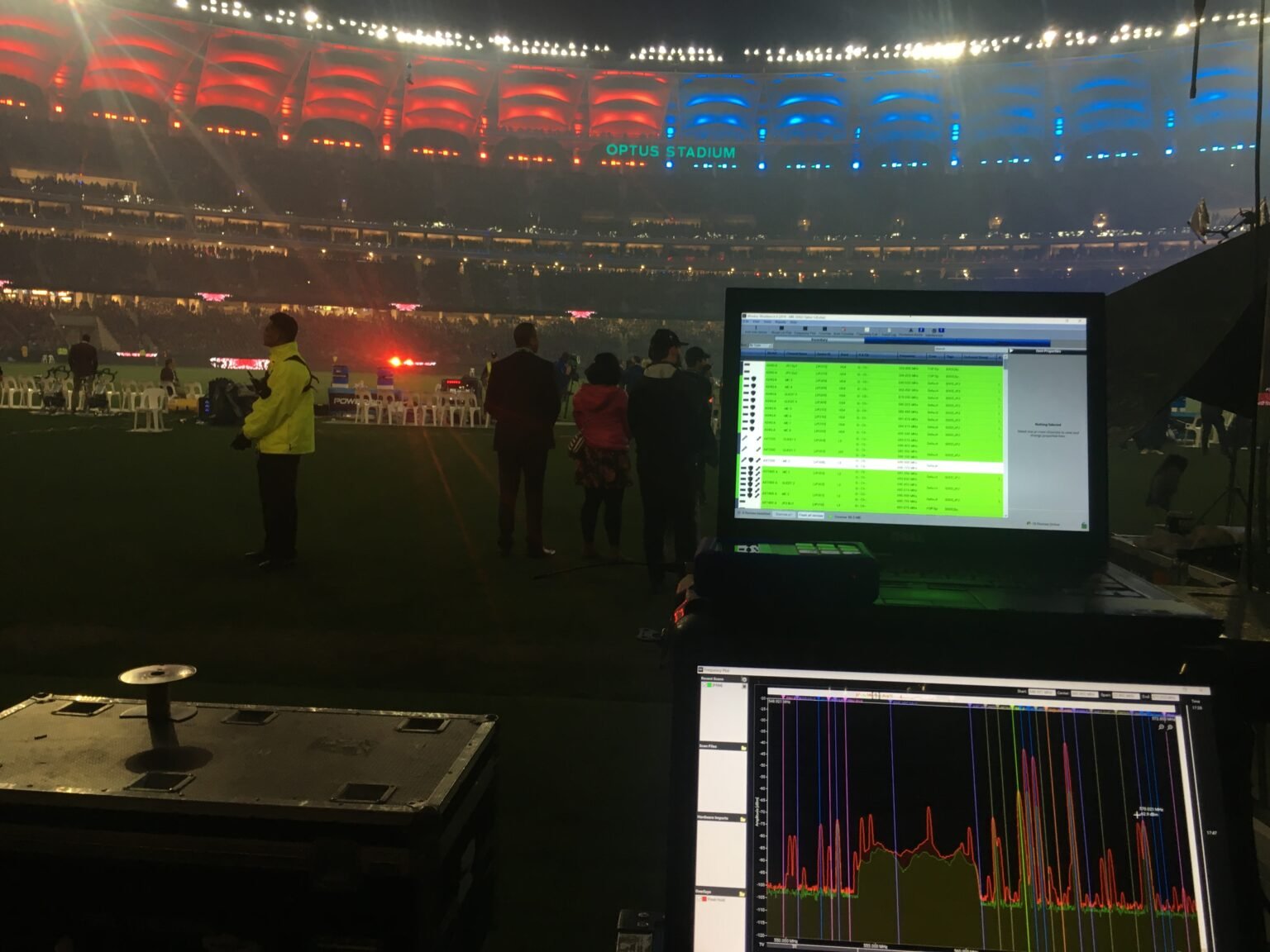
Subscribe to CX E-News
Around the Grounds with PRM
Optus Stadium in Perth, Western Australia, is known as the world’s most beautiful sporting facility. The locals are very proud of its reputation, and it has attracted some of Australia’s largest sporting and entertainment events to the city since its opening in 2017.
However, over the last twelve months, users in the stadium were experiencing RF interference issues that were beginning to have adverse effects on live entertainment and broadcasts from the stadium. The stadium had a spectrum plan that they had been using, but it hadn’t been updated since 2019.
Kim Wisniewski, ICT Manager at the stadium, contacted Profiles Resource Management (PRM) for some advice and assistance to establish an updated spectrum management plan. PRM has over 20 years’ experience in RF spectrum management here in Australia and overseas. Peter Twartz from PRM had previously prepared spectrum plans for the NRL State of Origin Game 2 in 2019 and the test cricket matches in 2019 and 2020 at Optus Stadium, so was quite familiar with the spectral environment.
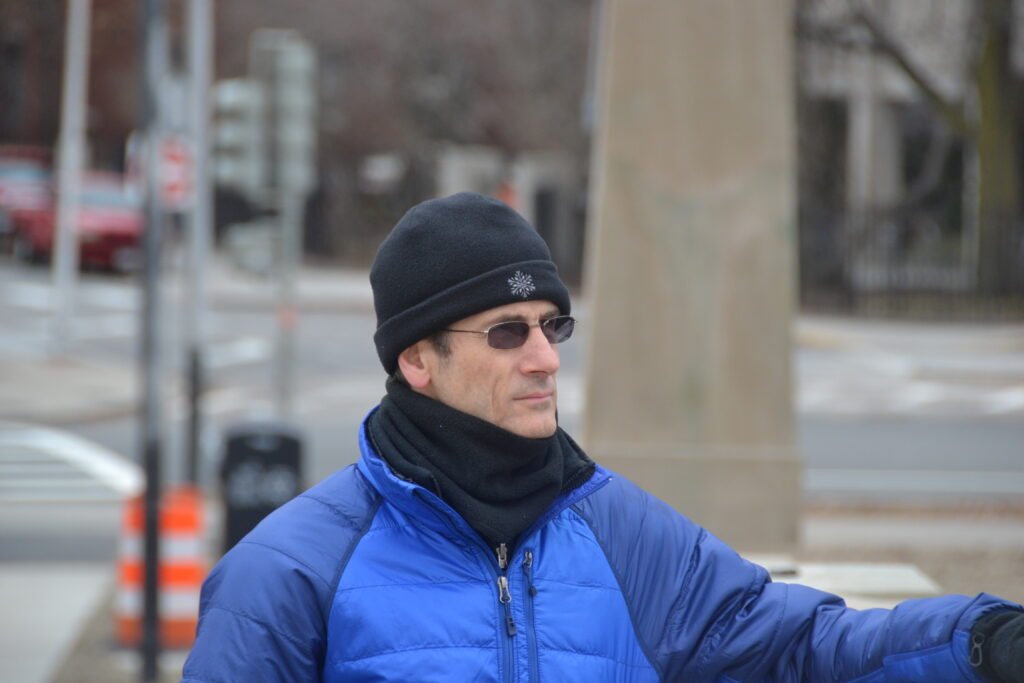
PRM sent three of their ScanTower Spectrum Monitoring Stations to Perth which were set-up at different locations around the stadium. Once connected they automatically commenced scanning and uploading spectrum data. PRM worked concurrently with all the major stakeholders at the stadium; radio and television broadcasters, in-house AV suppliers, security radio providers, and more, to verify exactly what equipment was in use and on which frequencies. This information was all collated and calculations were conducted to avoid intermodulations and prevent interference. Once completed, PRM distributed a master registry listing all frequencies to be used on the site on a normal event day.
Having successfully completed the frequency coordination part of the project, PRM remotely monitored frequencies for an AFL preliminary final. There were minimal issues during that event proving that the base level spectrum plan was indeed operable and robust.
Frequency coordination is only half the story though. Even though known users had been identified and allocated frequencies suitable for them, large events will attract more public interest which is usually generated by radio and television news crews. They come, they set-up, they do their live crosses with their wireless products and then move on to the next news story. To ensure all stakeholders get to use clean spectrum, PRM staff actively walk the stadium precinct looking for previously unidentified transmitters. These are added to the event spectrum plan. Sometimes this involves getting users to change frequencies and other times just check they are actually using frequencies already assigned to them when the information has been made available by their networks. This strategy was successfully deployed for the Bledisloe Cup match which was played at the stadium in early September.
But the Bledisloe was only a rehearsal for what was to come. With about two weeks’ notice, the AFL Grand Final was moved from its home ground at the Melbourne Cricket Ground (MCG) to Optus Stadium, Perth. It was the biggest event the stadium has ever seen in terms of complexity, and one of the reasons the stadium was granted the match was because they had an active arrangement with a spectrum manager. Once again, all stakeholders were contacted, and their requirements added to the data. A plan was created, disseminated to all stakeholders in time for rehearsals and updated as required. PRM crew were on hand for rehearsals with Peter Twartz monitoring all activity from the east coast. On match day, two crew members patrolled the stadium precinct with handheld spectrum analysers looking for rogue transmitters, assisting with any issues that came up while Peter took phone calls and monitored the spectrum. PRM brought together the requirements of the live event featuring Baker Boy and Birds of Tokyo, the broadcasts, the venue, and even the Match Officials.
A few issues did come up on the day but overall, the feedback was that the running of the event was helped by having a workable and responsive spectrum plan in place.
The scope of the event included over 130 two-way radio frequencies, 267 wireless audio frequencies, plus microwave RF camera and broadcast links.
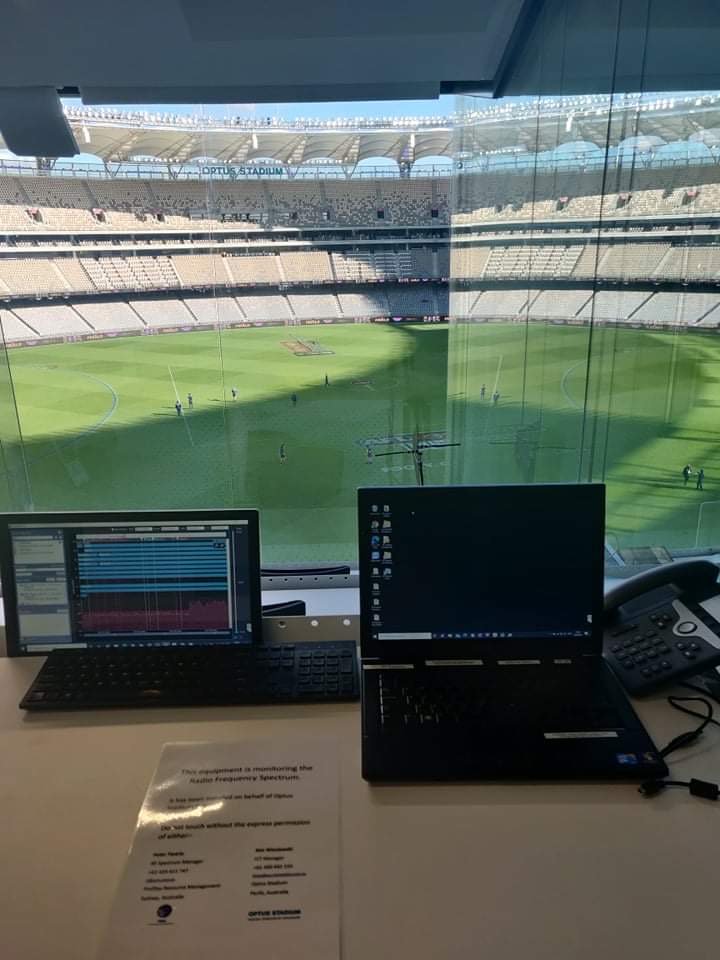
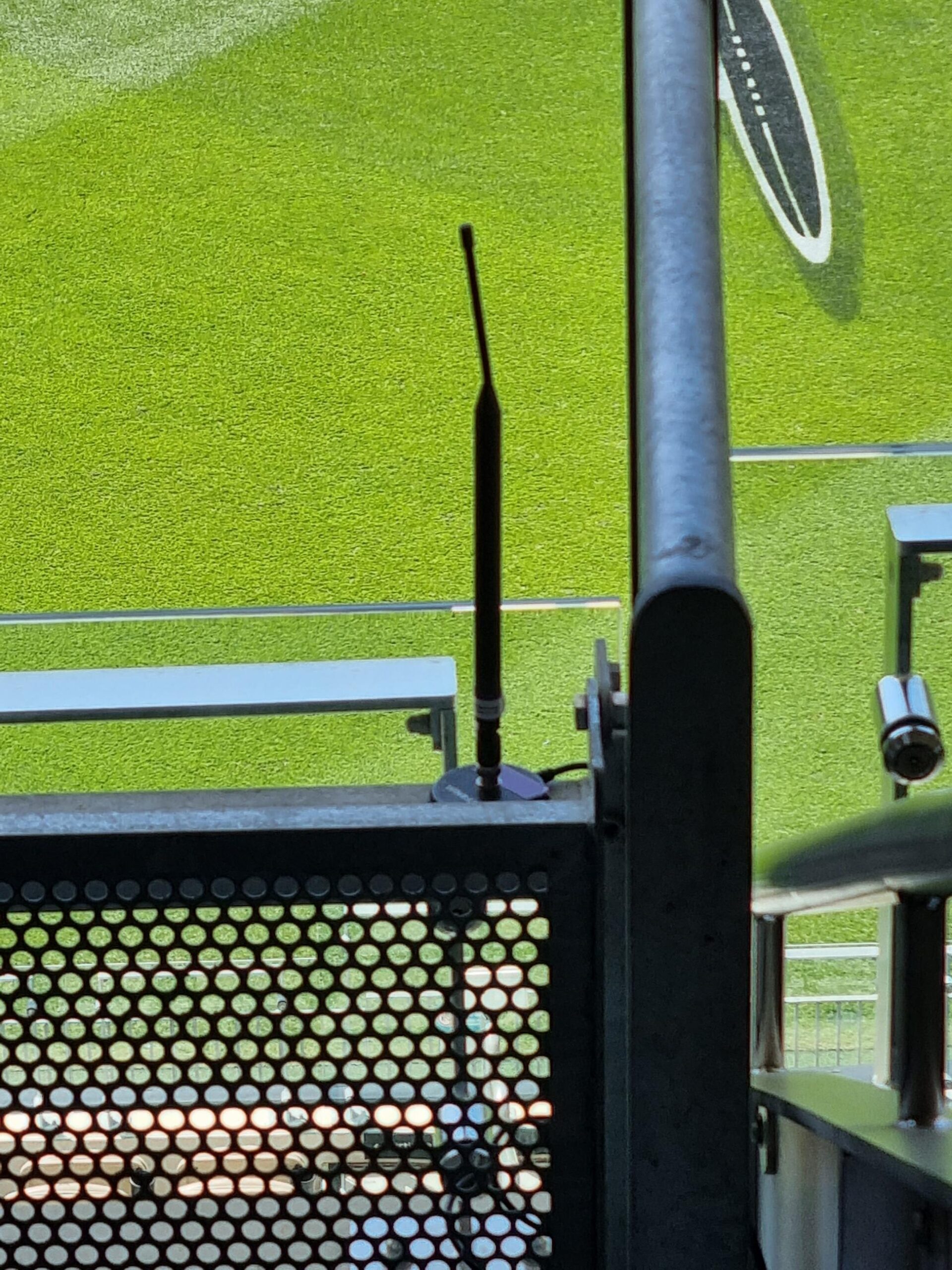
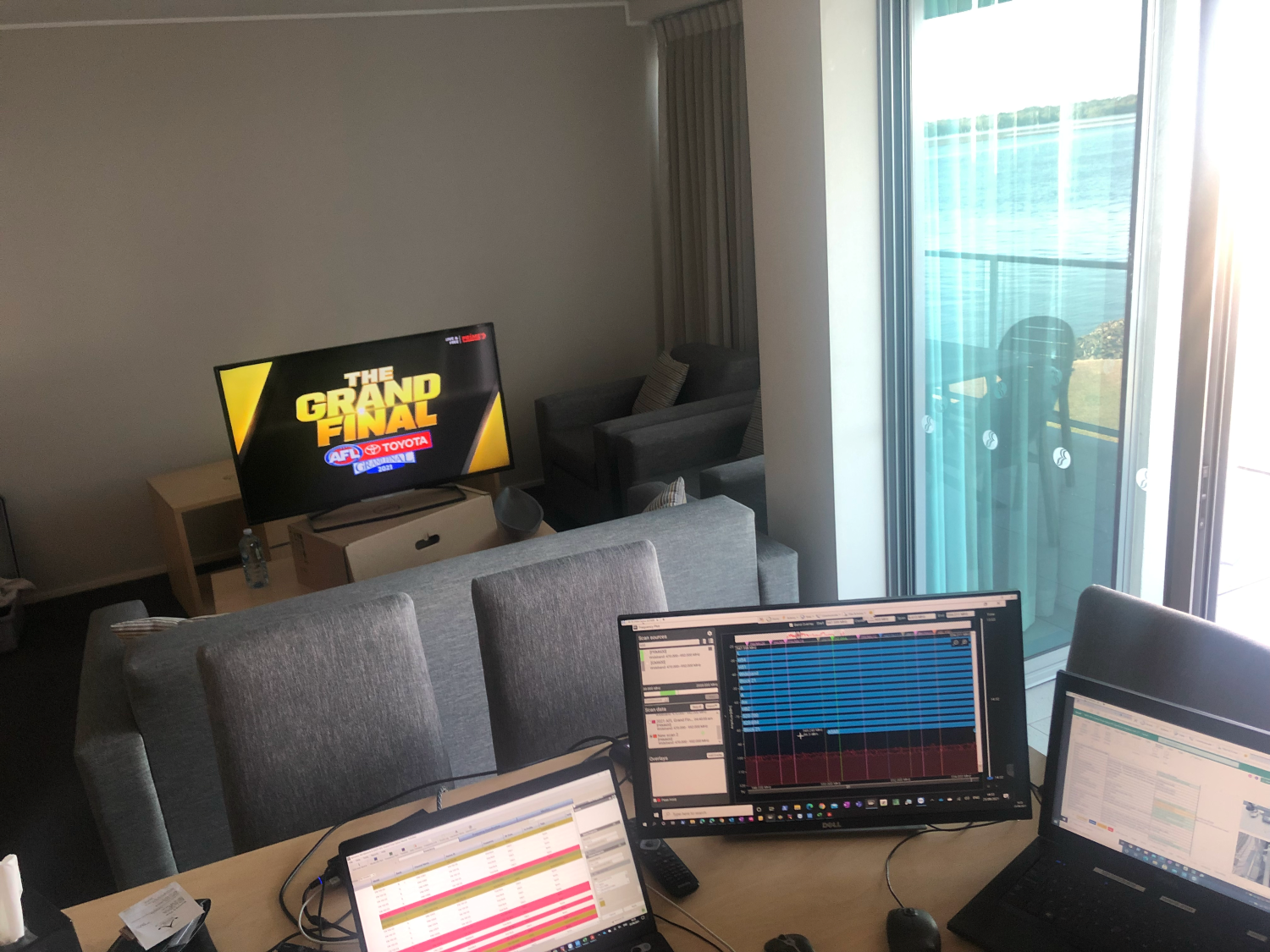
What’s the difference between Frequency Coordination and Spectrum Management?
“This is a question that we are often asked,” says PRM’s Peter Twartz. “At events we often come across users who tell us that they have sorted out the frequencies they are using to make sure they don’t clash with their other devices, and maybe some devices used by the venue. If you are controlling 80% of the wireless devices at an event, this is good practice and is what we call frequency coordination. At Optus Stadium the spectrum plan we built for them allows the stadium users to coordinate frequencies for day-to-day events.”
“But this approach is less efficient and more prone to interference if there are multiple stakeholders at an event, and no one is controlling more than 40% of the wireless devices. Who is standing in the middle to determine who should be using what frequency?”
That is what a spectrum manager does. Essentially the spectrum manager is an independent party working with all event stakeholders to ensure that they can all operate with as little interference as possible. The spectrum manager is also actively monitoring and patrolling the environment to make sure that any issues are dealt with before they become a problem for the event or broadcast.
What tools are commonly used for Frequency Coordination and Spectrum Management?
The major wireless audio brands all have devices and software that are great for coordinating frequencies at a system level. But when you are managing over 300 frequencies across two-ways, microwave RF camera and broadcast links as well as wireless audio devices, you need to deploy some more tools.

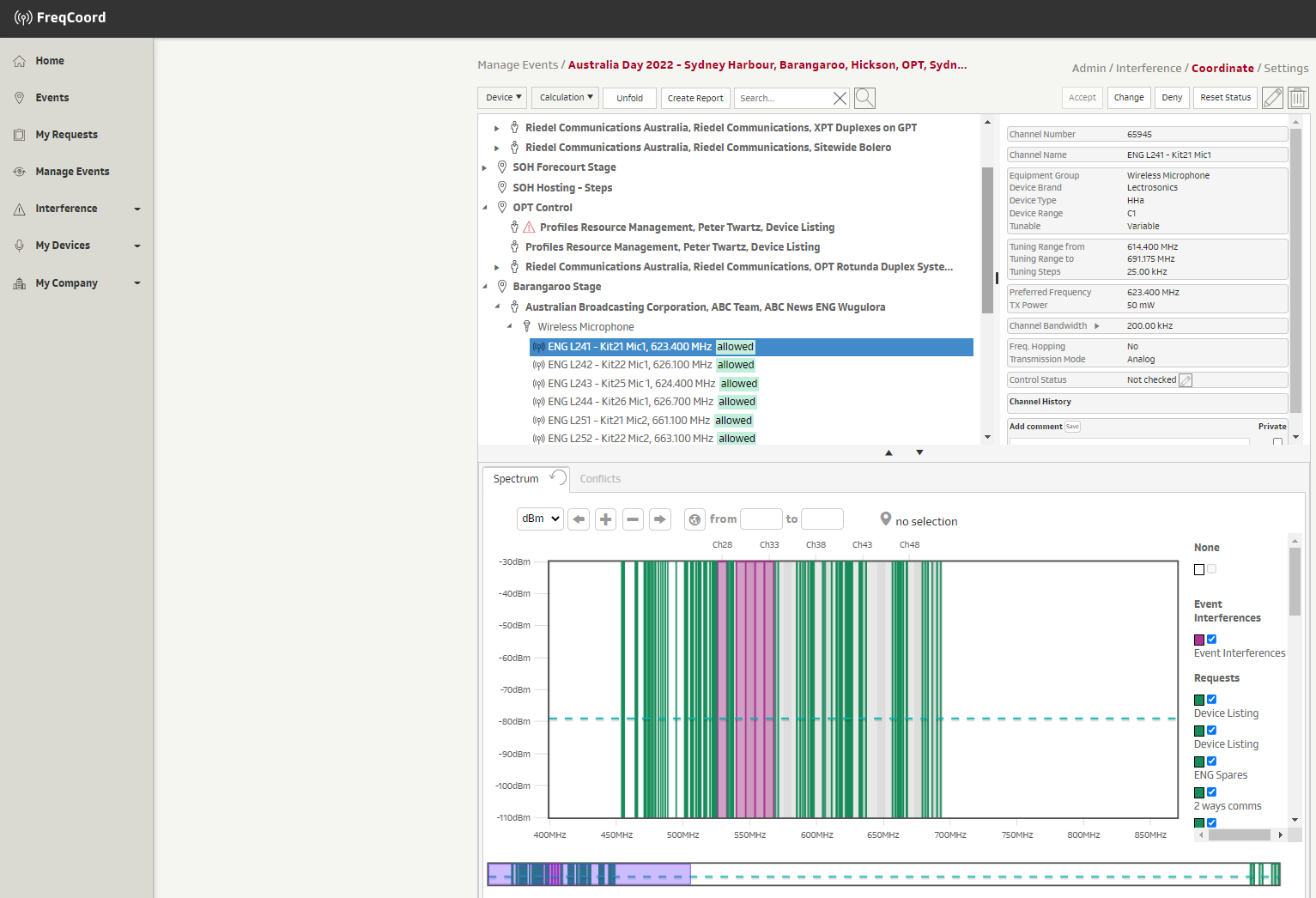
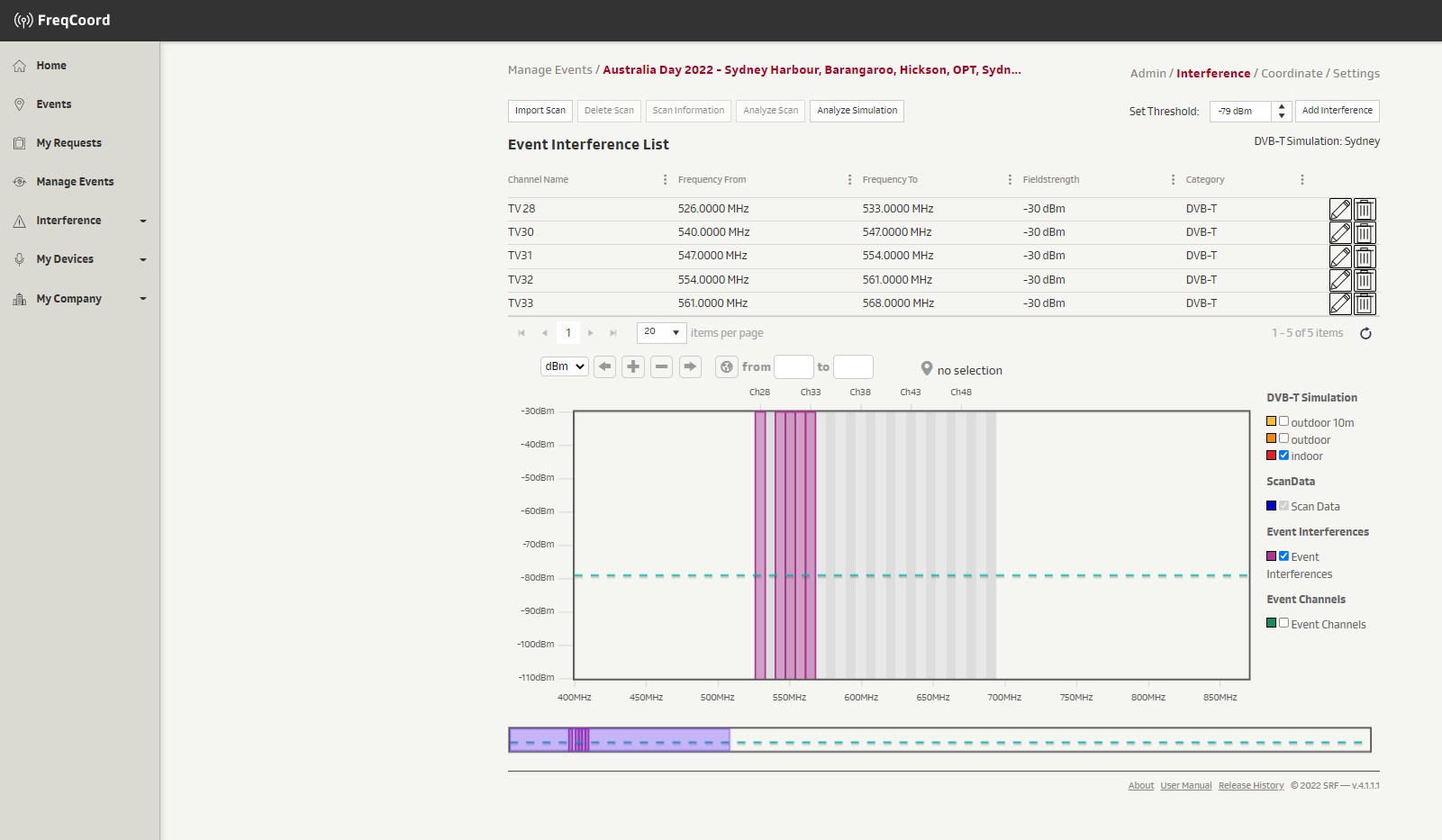
For frequency coordination and calculations, PRM use a cloud-based tool called FreqCoord. FreqCoord was developed by SRF Swiss Radio and Television and is a mobile-optimised, multi-user web app which makes frequency coordination for events easy. Not only does the app calculate interference, but frequency managers can invite stakeholders to register their equipment for an event or venue from within the app. Communicating with all the stakeholders is one of the most time-consuming parts of the process, so containing it within the app makes it easier to manage.
Monitoring spectrum is done using PRM designed ScanTowers. Depending on the size and topography of the venue, three or more ScanTowers are placed at appropriate locations to gather monitoring data. This is analysed either onsite or remotely, depending on the client’s requirements. The idea here is to triangulate and localise the data to get an indication of where rogue frequencies may be coming from. If PRM are onsite when an issue is identified, then a crew member is deployed with a Rhode and Schwarz analyser to pinpoint the issue and resolve it.
Subscribe
Published monthly since 1991, our famous AV industry magazine is free for download or pay for print. Subscribers also receive CX News, our free weekly email with the latest industry news and jobs.




